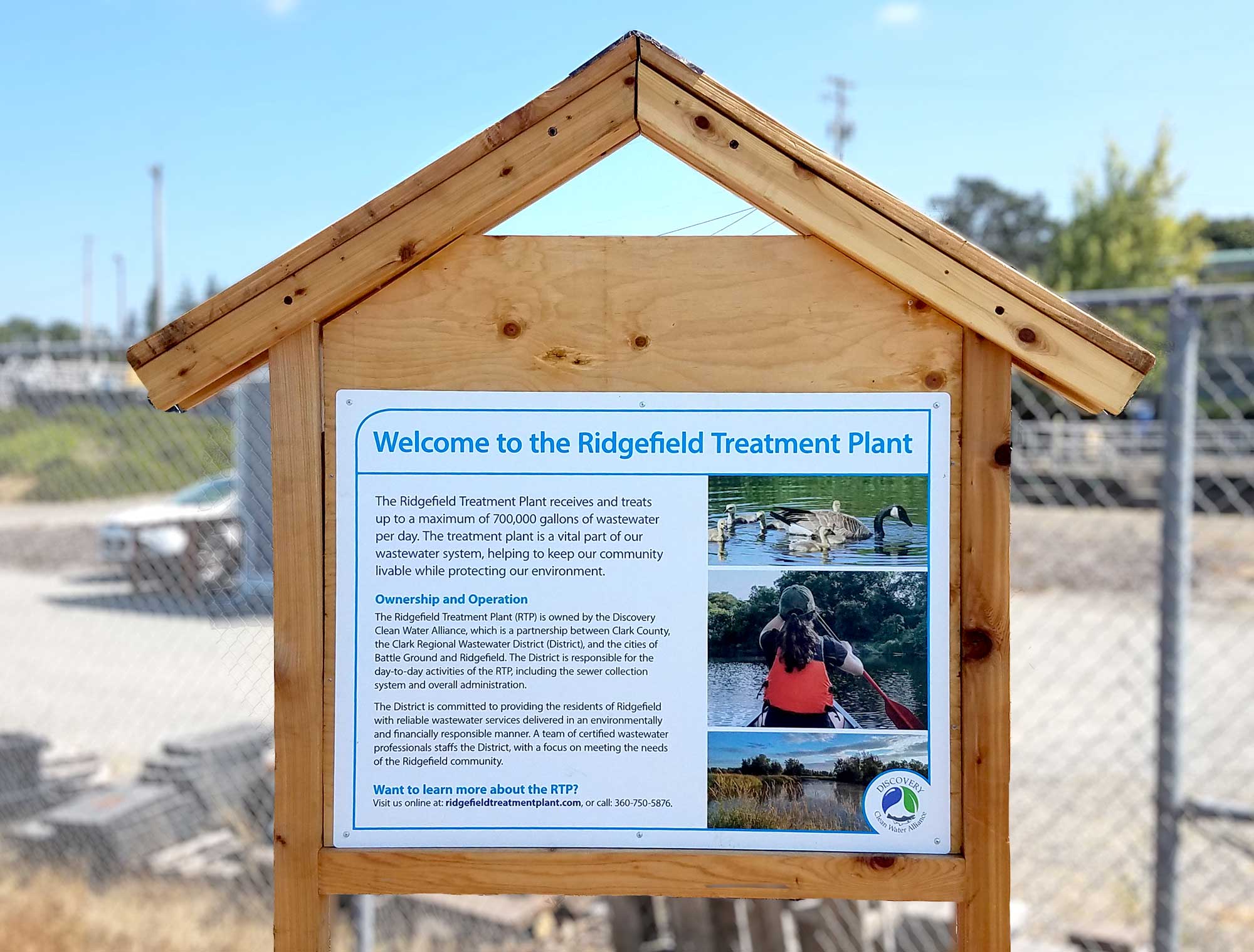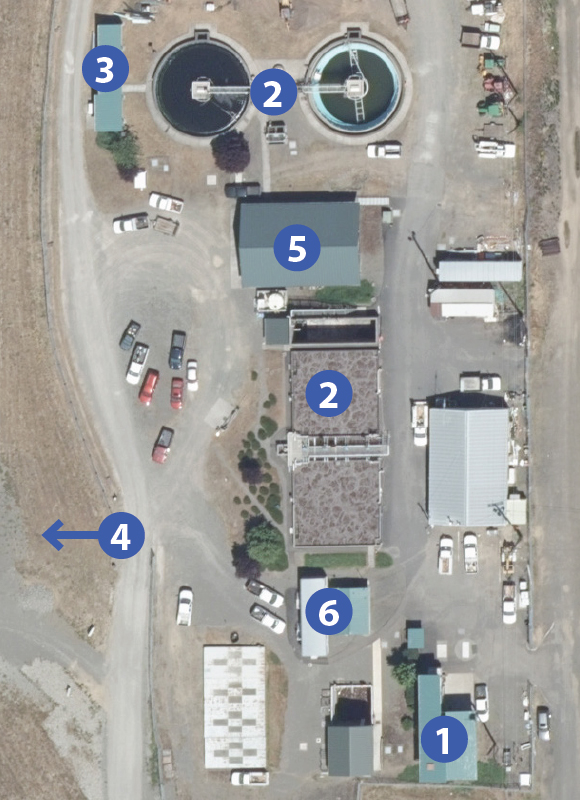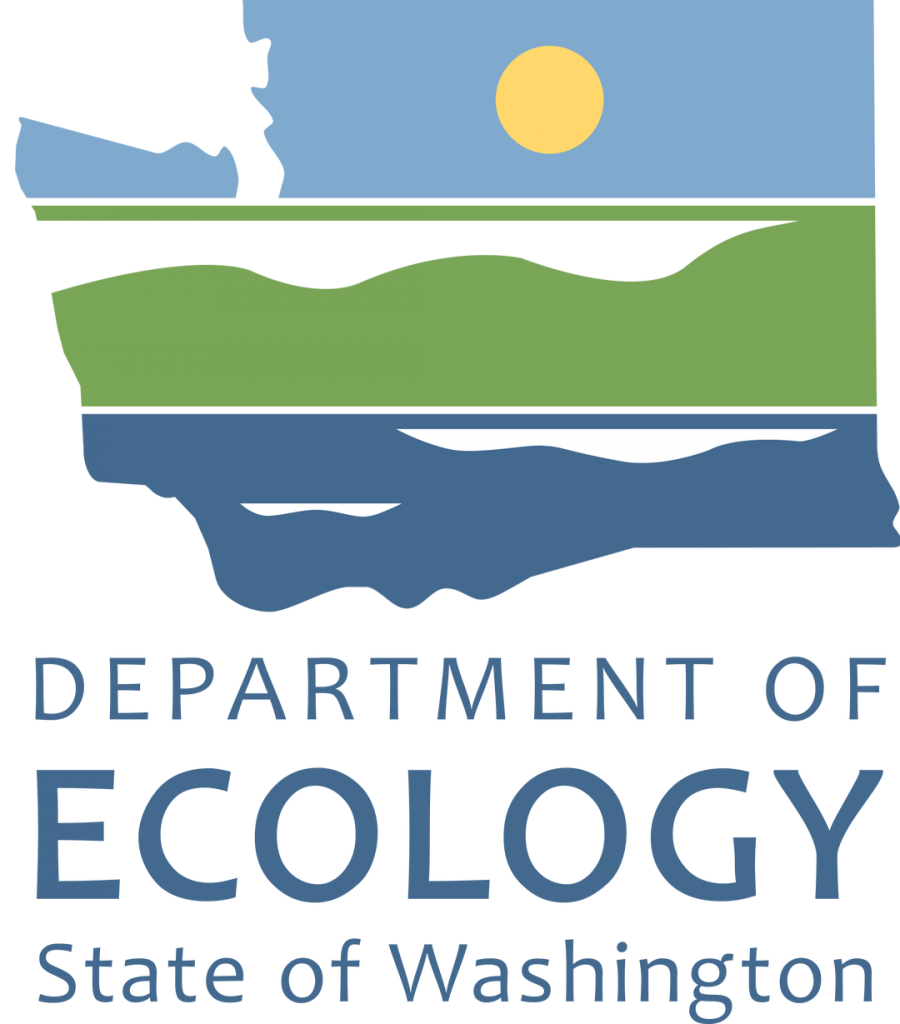The Ridgefield Treatment Plant (RTP) receives and treats an average of 280,000 gallons of wastewater per day from homes and businesses, serving approximately 6,000 residents in just over 2,400 equivalent homes and businesses. The treatment plant is a vital part of our wastewater system, helping to keep our community livable while protecting our environment.
Providing Reliable Wastewater Service
The RTP is the last step of the wastewater management system. All sewer pipes and pump stations are designed with one purpose: to reliably carry wastewater from homes and businesses to the treatment plant where it can be treated and released safely back into the environment.
Our highest priority is keeping the plant operating to industry standards, while meeting or exceeding all environmental regulations. The plant has 2.25 full-time staff, including a portion of the District Operations Manager’s time and certified operations and maintenance technicians.
To ensure the plant operates in a safe, reliable and cost-effective way, all plant operations are monitored 24 hours a day, 7 days a week through an automated computerized control system. A backup generator ensures operations run consistently at all times, even in the event of a power outage. The entire perimeter of the site is fenced for safety.
Being a Good Neighbor
In addition to serving the community, the treatment plant operators strive to be good neighbors. This means managing vehicle traffic by instructing staff and contractors to drive slowly near the plant due to the recreational areas surrounding the treatment plant site. Being a good neighbor also involves educating the community about the important role of wastewater treatment in protecting public health and the environment. We are happy to give tours of the plant for community members.

Odor Control
Our plant operators try to minimize odors through strategic use of the treatment processes and with air treatment systems. There are, however, certain times during the year when odors may be more noticeable close to the facility. These times are generally: during summer and early fall on days with little or no wind; in the mornings when flows are low and sewage takes longer to get to the plant, in the evenings when flows peak; and if there is disruption to the sludge hauling schedules that cause solids to stay at the plant for longer than desired in the summer months.
What Happens at the Treatment Plant
Preliminary Treatment/Screening
Preliminary treatment involves screening out objects such as personal hygiene products, wipes and other debris. Trash that is removed from the system is taken to the landfill.
Treatment/Aeration Tanks and Clarifiers
Secondary treatment creates ideal food and oxygen conditions that allow bacteria and other microscopic organisms to work quickly and efficiently to digest dissolved waste, just as they would normally in the natural environment but on a much larger scale. At the end of secondary treatment, nearly all waste has been removed from the water.
Disinfection
Disinfection is the final step in the liquids treatment process. Instead of chlorine, which was typically used in past decades, the plant uses ultraviolet lamps. This is a safer process than chemical disinfection. Water passes through chambers containing ultraviolet lamps that kill any remaining disease-causing bacteria and pathogens.
Discharge
Following treatment, effluent (treated wastewater) from the plant is transported by pipeline and discharged into Lake River via the plant outfall pipe. The State of Washington’s Department of Ecology closely monitors this process to ensure that all effluent meets strict environmental standards. The diffuser is periodically inspected by a diver to ensure efficient operations.
Solids Processing
All solids collected during the main treatment process are transported 2-3 times per week to the Salmon Creek Treatment Plant in the Felida area where they are further processed.
Process Control
Plant operation requires constant monitoring and quality control testing. Liquids and solids are carefully monitored by certified operations staff and tested and evaluated at each stage of the treatment process to ensure compliance with stringent regulatory requirements.

Ridgefield Wastewater Treatment Plant
Plant Ownership and Operation
The District is responsible for day-to-day activities of the RTP and collection system operations as well as the engineering and capital planning and the overall financial and administrative functions of the Alliance.
Ridgefield Public Works staff are also located on site at the RTP. Public Works oversees the design, construction, operation, and maintenance of all City-owned public infrastructure, including streets, sidewalks, water, stormwater, parks, and the cemetery.
- The information in this web page is also available as a fact sheet (PDF).
Planning for the Future
The Alliance will continue to operate the Ridgefield Treatment Plant for the foreseeable future. The Alliance is scheduled to prepare an updated 20-year plan for all of its facilities in the next 3-4 years. The long-term plan for the Ridgefield Treatment Plant will further determine the anticipated role of the Ridgefield Treatment Plant within the context of the overall regional system.
Contact Us to Learn More
Matt Jenkins
Wastewater Operations Manager
Clark Regional Wastewater District
The Ridgefield Wastewater Treatment Plant is located at
109 W Division Street, Ridgefield, WA 98642

